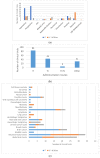Oncolytic Viruses: An Inventory of Shedding Data from Clinical Trials and Elements for the Environmental Risk Assessment
- PMID: 37766125
- PMCID: PMC10535390
- DOI: 10.3390/vaccines11091448
Oncolytic Viruses: An Inventory of Shedding Data from Clinical Trials and Elements for the Environmental Risk Assessment
Abstract
Attenuated and/or genetically modified oncolytic viruses (OV) gain increasing interest as a promising approach for cancer therapy. Beside the assessment of subject safety, quality and efficacy aspects of medicinal products for human use, genetically modified viruses are also governed by EU regulatory frameworks requiring an environmental risk assessment (ERA). An important element to be assessed as part of the ERA is the incidence of exposure to OV of individuals, other than the trial subjects, and the environment. The evidence-based evaluation of shedding data is considered to be decisive in that context, as it may impact the OV capacity to be transmitted. This is particularly true for OV still able to (conditionally) replicate as opposed to replication-defective viral vectors commonly used in gene therapy or vaccination. To our knowledge, this article presents the most extensive and up-to-date review of shedding data reported with OV employed in clinics. Besides the identification of a topical need for improving the collection of shedding data, this article aims at providing an aid to the design of an appropriate shedding study, thereby relying on and further complementing principles described in existing guidelines issued by European and international institutions.
Keywords: biosafety; cancer; clinical trials; environmental risk assessment; oncolytic virus; shedding.
Conflict of interest statement
The authors declare no conflict of interest.
Figures







References
Publication types
LinkOut - more resources
Full Text Sources

